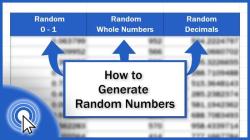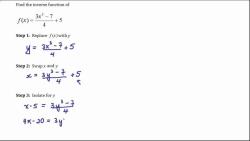How to find antilog with simple calculator?
Calculating the antilogarithm (also known as finding the inverse of a logarithm) with a simple calculator typically involves using the "10^x" or "e^x" function, depending on whether you're working with base 10 or the natural logarithm (base e). Here are the steps to find the antilog with a simple calculator:
For Base 10 (Common Logarithm):
Press the "10^x" or "10 raised to the power of x" key on your calculator. This key is usually labeled as "10^x" or something similar.
Enter the exponent (the result of the logarithm) using the numeric keys on your calculator. For example, if you want to find the antilog of log base 10 (log10) of 3, you would enter "3."
Press the "equals" (=) button to calculate the antilog. The calculator will give you the antilogarithm of the number you entered.
For Natural Logarithm (Base e):
Press the "e^x" or "e raised to the power of x" key on your calculator. This key is usually labeled as "e^x" or something similar.
Enter the exponent (the result of the natural logarithm) using the numeric keys on your calculator. For example, if you want to find the antilog of ln(3), you would enter "3."
Press the "equals" (=) button to calculate the antilog. The calculator will provide the antilogarithm of the number you entered.
It's important to remember that the base of the logarithm you're working with determines which function to use. For common logarithms (base 10), use "10^x," and for natural logarithms (base e), use "e^x." These functions allow you to find the antilogarithm quickly and easily with a simple calculator.
How to Calculate Antilogs Using a Basic Calculator
Antilogs, also known as inverse logarithms, are the opposite of logarithms. While logarithms represent the power to which a base must be raised to produce a given number, antilogs reverse this process, finding the original number based on its logarithmic value.
Calculating antilogs using a basic calculator is straightforward. Most scientific calculators have a dedicated antilog button (usually labeled as "10^x" or "antilog"). Simply enter the logarithmic value and press the antilog button to obtain the corresponding original number.
For instance, if you want to find the antilog of 2.3010, which represents the base-10 logarithm of 200, enter "2.3010" into your calculator and press the antilog button. The calculator will display the result, which is approximately 200.
Understanding Antilogs and Logarithms
Logarithms and antilogs are fundamental concepts in mathematics and have widespread applications in various fields, including science, engineering, and finance.
Logarithms are used to express the relationship between numbers of different magnitudes. They represent the power to which a base must be raised to produce a given number. For example, the base-10 logarithm of 100 is 2, as 10 raised to the power of 2 equals 100.
Antilogs, on the other hand, are used to find the original number based on its logarithmic value. They reverse the logarithmic operation, providing the original number from which the logarithm was calculated.
Common Applications of Antilogs
Antilogs have a wide range of applications in various fields:
Scientific Calculations: Antilogs are used in various scientific calculations, including those involving exponential growth or decay, pH measurements, and radioisotope decay.
Engineering Applications: Antilogs are used in engineering calculations involving sound intensity levels, electrical circuit analysis, and structural engineering.
Finance and Economics: Antilogs are used in financial and economic calculations, including compound interest calculations, risk assessment, and population growth projections.
Tips for Accurate Antilog Calculation
To ensure accurate antilog calculations, follow these tips:
Use a Scientific Calculator: A scientific calculator is essential for accurate antilog calculations, as it provides the necessary functions and precision.
Enter Values Correctly: Carefully enter the logarithmic value into the calculator, ensuring the decimal placement and sign are correct.
Double-Check Results: Verify the antilog result by recalculating the logarithm of the result and ensuring it matches the original logarithmic value.
Antilogs in Scientific and Engineering Calculations
Antilogs play a crucial role in scientific and engineering calculations, particularly those involving exponential growth or decay processes. For instance, antilogs are used in:
Radioactive Decay: Calculating the remaining amount of a radioactive substance after a certain time based on its decay rate.
Population Growth: Modeling population growth patterns and predicting future population size.
Chemical Kinetics: Analyzing reaction rates and predicting the concentrations of reactants and products over time.
Electrical Circuits: Analyzing the behavior of electrical circuits involving exponential changes in voltage or current.
Antilogs are essential tools for understanding and analyzing various phenomena in science and engineering. Their ability to reverse logarithmic relationships makes them invaluable for calculations involving exponential growth, decay, and other processes.












